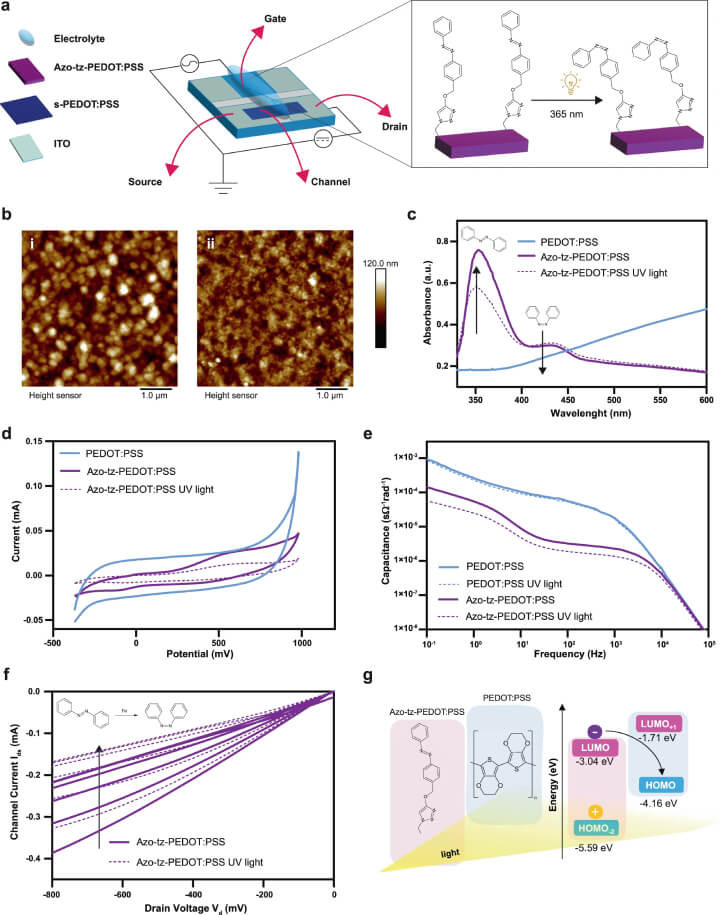Artificial Eyes Evolved: The Retina-Like OPET Device
20-11-2023 | By Robin Mitchell
As researchers continue to make countless advances in the field of electronics, researchers recently published their findings on a new electronic device that not only imitates the retina but is also non-toxic and potentially biocompatible, making it a possible solution for future artificial eyes and prosthetics. What challenges does the human eye present, what did the researchers develop, and could such technologies be used to restore vision in the blind?

What Challenges Does the Human Eye Present?
Of all the senses that living creatures have, the ability to see is arguably the most important. Unlike other senses, the amount of data that is presented via eyes is unfathomable, allowing living creatures to detect objects, determine their surface texture, see motion, and much more.
In fact, when it comes to humans, you can take away a good number of senses, including touch, taste, and sound, and one is still able to function in society. However, the loss of sight results in numerous challenges, often requiring some degree of care from others, as sight is essential for watching TV, cooking, paying bills, moving around, and much more.
And yet, despite the brilliance that is the human eye, it is one of the simpler organs. At its core, the eye is nothing more than some light-sensitive photodetectors that have an image projected onto them via a lens.
Where the brilliance of vision comes in is not the eye itself but how that information is pre-processed and then decoded by the brain. This is why, in some cases, blindness can have nothing to do with the eye itself but the condition of the brain itself.
But despite the eye being a relatively simple organ, trying to create an artificial eye is an extremely difficult challenge, something that researchers have barely been able to achieve. The reason for this difficulty stems from a multitude of issues, including the need for biocompatible materials that don’t trigger an autoimmune response, the fact that not all blindness is a result of eye issues, and the need to interface with the optic nerve, which has a high nerve density.
While some attempts have been made, such as the Argus II eye implants, these projects have been somewhat abandoned, but the reason for this is not entirely clear. It could be possible for future devices to bypass the eye and optical nerve entirely, but as current technology stands, this is not likely to become a reality in the next few decades.
Researchers Develop Electronic Imaging Device That Imitates the Retina
Recognising the challenges faced with artificial retinas and the dependency on technologies that are not biocompatible, a team of researchers hailing from Germany and Italy have recently published a paper where they describe an electronic device that mimics a retina utilising non-toxic compounds.
As any electronic device integrated into living tissue must be biologically inert, many off-the-shelf electronic solutions cannot be used in such environments. To make matters worse, electronics that are flexible, something which would be needed for an artificial retina, are generally based on organic compounds, which themselves can be highly reactive to biological matter (and therefore trigger an immune response).
To solve these challenges, the researchers explored organic materials that can offer flexibility while not being toxic to humans and were able to find a combination that can be used to make flexible photodetectors. The resulting device called an organic photoelectrochemical transistor (OPET), was able to produce not only an electrical response to light but a chemical ion response as well, meaning that it is possible for it to be bridged with neurons.
Moving forward, the researchers are now looking to combine their photodetector with living cells to study how the technology could be used in other fields, including prosthetic eyes.

a) Schematic of the organic photoelectrochemical transistor with azo-tz-PEDOT:PSS gate and PEDOT:PSS channel. UV light changes the gate's structure. b) AFM images of PEDOT:PSS and azo-tz-PEDOT:PSS. c) UV-visible spectra showing trans-cis isomerization before and after UV exposure. d) Cyclic voltammograms of PEDOT:PSS and azo-tz-PEDOT:PSS, with and without UV irradiation, showing reduced hysteresis in azo-tz-PEDOT:PSS due to sodium ascorbate treatment, which lowers conductivity. Both polymers exhibit capacitive behavior. e) Capacitance of PEDOT:PSS and azo-tz-PEDOT:PSS, before and after UV exposure. f) Transfer-characteristics of azo-OPECT pre and post UV irradiation, showing gate-source voltage and Vds sweeping. g) Chemical structure and energy levels of azo-tz-PEDOT, highlighting HOMO/LUMO levels and potential photoinduced electron transfer pathways.
The Potential of OPET in Vision Restoration
The recent breakthrough by the German and Italian research team, as detailed in their Nature Communications paper, introduces a novel approach to artificial vision. Their development of an organic photoelectrochemical transistor (OPET) represents a significant leap in creating devices that can potentially interface with biological systems, including the human optic nerve.
This OPET device is unique in its ability to respond to light not just electrically, but also chemically, producing ion responses akin to biological processes. This dual response system is crucial for integrating artificial devices with living tissues, especially in delicate applications such as vision restoration. The researchers' focus on using non-toxic, biocompatible materials addresses a critical challenge in the field of prosthetic vision – the need for devices that can safely and effectively interact with biological tissues without triggering adverse reactions.
While the current state of technology does not yet allow for the complete restoration of vision, especially in cases where the optic nerve or brain is damaged, the OPET technology opens new avenues. It suggests the possibility of developing artificial retinas that can more naturally integrate with the body's existing neural networks. This could be a game-changer for those with retinal diseases or damage, offering a ray of hope where traditional prosthetics have fallen short.
The journey towards fully functional artificial eyes is still in its infancy, but with each such advancement, we edge closer to a future where vision restoration could become a reality for many. As we continue to explore the interface between electronic devices and biological systems, the dream of restoring sight to the visually impaired becomes increasingly tangible.
Could Such Technologies Be Used to Restore Vision?
If a researcher has access to an optic nerve, it is relatively easy to generate flashes of light by sending electrical pulses, but trying to generate images is a significantly more complex challenge. The density of nerves in the eye is immense, and trying to target each nerve accurately is simply impossible with current technology.
But, it may be possible that, in the future, if the retina itself is undamaged, then a sensor array could be placed over the retina, which either forces the retina cells to activate or outright overtakes the role of the retina. Even then, it may not be possible to restore full vision via artificial photodetectors due to the way that the brain interacts with the eye. For example, the eye is known to pre-process data before sending it to the brain, and as the brain often lacks visual data from the eyes, it has to fill in the gaps most of the time.
That isn’t to say that artificial eyes are impossible, but considering that the eye is much more than a lens and array of sensors, it may be a long time before we can begin to restore vision to those who have lost it.

